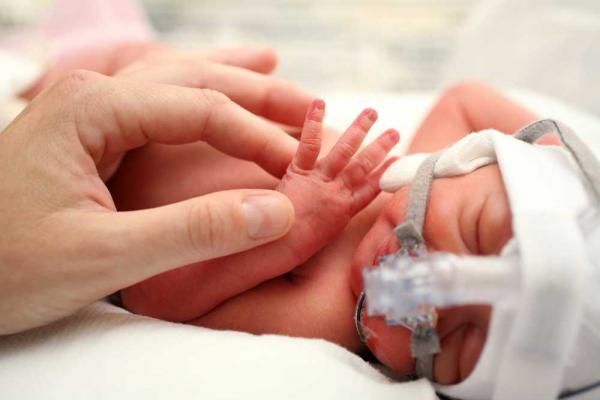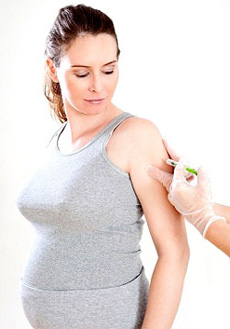Birth defects are the leading cause of death for infants during the first year of life. Every year, about 7.9 million infants (6% of worldwide births) are born with serious birth defects. With the causes of over 50% of birth defects unknown, it remains a challenge how to diagnose and prevent them? Although some congenital defects can be controlled and treated, an estimated 3.2 million of these children are disabled for life. The most common birth defects are heart defects, cleft lip and cleft palate, Down syndrome and spina bifida.

Although some birth defects are inherited, others are a product of harmful environmental factors known as teratogens, and still others are multifactorial, resulting from a complex interaction of genetic and environmental influences. However, in approximately half of all birth defect cases, the causes are unknown (Christianson et al., 2006). A pregnant mother’s health, diet, and level of exposure to toxins and environmental pollutants all have a direct effect on fetal development.
Hereditary Factors are hard to control and monitor, but dietary and environmental factors can be managed to great extent.
- Maternal Age: Researchers have established the likelihood that a reproductive cell will contain an extra copy of chromosome 21 increases dramatically as a womanages. Therefore, an older mother is more likely than a younger mother to have a baby with Down syndrome. Many specialists recommend that women who become pregnant at age 35 or older undergo prenatal testing for Down syndrome.

- Alcohol Consumption: When a woman drinks alcoholic beverages, the alcohol in her blood crosses the placenta freely and enters the embryo or fetus through the umbilical cord. Children affected by prenatal exposure to alcohol may suffer lifelong consequences, including mental retardation, learning disabilities, and serious behavior problems.
- Medications: The acne medication isotretinoin (Accutane and other brand names), Thalidomide (approved only for a rare, severe skin disorder, but sometimes used for other conditions), anti seizure medicines, sedatives, anti-depressant etc. Prescription drug abuse can be especially dangerous during pregnancy. Some of these drugs can affect the blood flow from a mother to her unborn baby. The Food and Drug Administration (FDA) gives prescription drugs a letter grade of A, B, C, D or X to show which medications are safe to take during pregnancy. You can learn more about this letter grade system by visiting the FDA Web site, or by talking to your health provider or pharmacist.
- Use of Illicit Drugs: Nearly 4 percent of pregnant women in the United States use illicit drugs such as marijuana, cocaine, Ecstasy and other amphetamines, and heroin. These and other illicit drugs may pose various risks for pregnant women and their babies. Some of these drugs can cause a baby to be born too small or too soon, or to have withdrawal symptoms, birth defects or learning and behavioral problems.
- Smoking during pregnancy. Smoking causes 1 in 5 (20 percent) oral clefts. When you smoke during pregnancy, your baby is exposed to dangerous chemicals like nicotine, carbon monoxide and tar. These chemicals can lessen the amount of oxygen that your baby gets. Oxygen is very important for helping your baby grow healthy. Smoking can also damage your baby’s lungs. The sooner you quit smoking during pregnancy, the healthier you and your baby will be. It’s best to quit smoking before getting pregnant. But if you’re pregnant, this would be a great opportunity to kick the habit.
- Obesity: Women who are obese when they conceive are more likely to have babies with birth defects than are mothers of normal weight, a US study suggests. (The study was published in the August issue of Archives of Pediatrics & Adolescent Medicine). Compared with women who maintained the recommended body mass index (BMI) of between 18.5 and 26, women who were obese — defined as having a BMI of 29 or greater — before pregnancy were more than twice as likely to have an infant with spina bifida, nearly twice as likely to have a baby with other neural-tube defects, and more vulnerable to giving birth to babies with heart problems, cleft palate or cleft lip, abnormal rectum or anus development, and hydrocephaly, a condition in which excess spinal fluid builds up in the brain.
- Poorly controlled Diabetes: Both animal studies and human studies provide substantial evidence that alterations in glycemic control are responsible for an increased risk of a range of structural birth defects among women who have diabetes prior to becoming pregnant. A new study published in Diabetologica reveals that pregnant women with diabetes are almost four times more likely to have a baby with a birth defect.
Guidelines from the National Institute of Health and Clinical Excellence say women should reduce their levels of glycated haemoglobin (HbA1c – a marker for long-term blood sugar control) to below 6.1% before trying to have a baby.
Levels of glycated haemoglobin at conception (marker for blood sugar) Risk of birth defect 6.1% One in 34 7% One in 26 8% One in 17 9% One in 12 10% One in nine
- Environmental Risks: Harmful substances can get into your body through your skin or when you breathe, eat or drink. Some can be immediately dangerous to you and your baby. Radiation from different sources can attach itself to materials like dust, powder or liquid. These materials can become radioactive, which means that they give off radiation. Contact with lead, mercury or arsenic during pregnancy can put your baby at risk for preterm birth, low birth-weight and developmental delays. Pesticides or chemicals used to kill or keep away insects and rodents may be harmful during pregnancy. Their use may lead to birth defects and learning problems.
Note: Watch out for these factors if you wish, to have a healthy pregnancy and a healthy childbirth.
References: